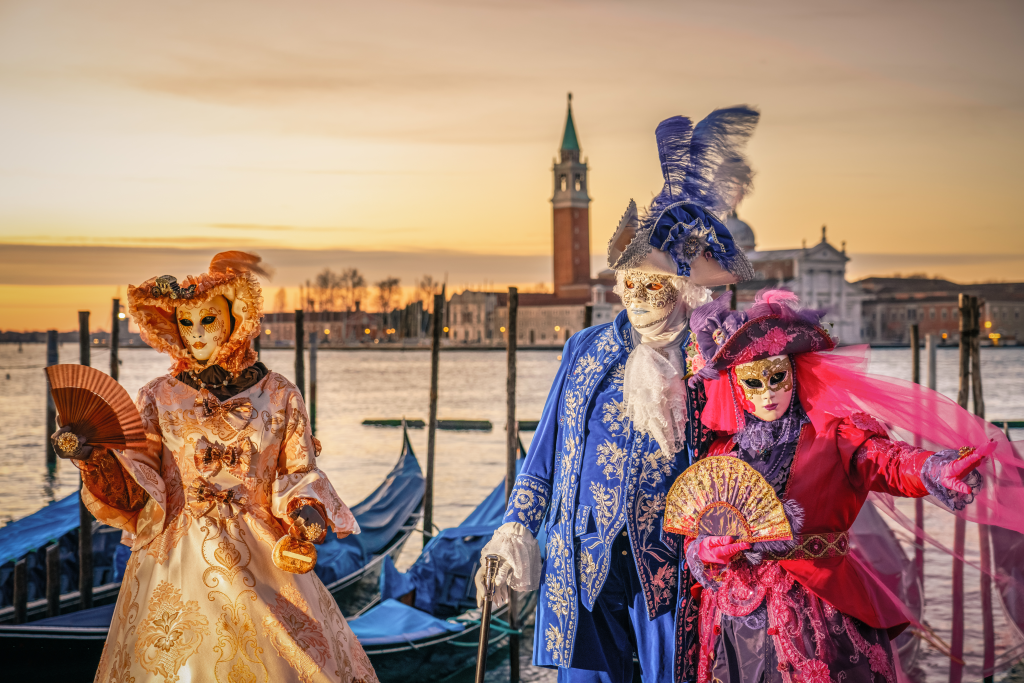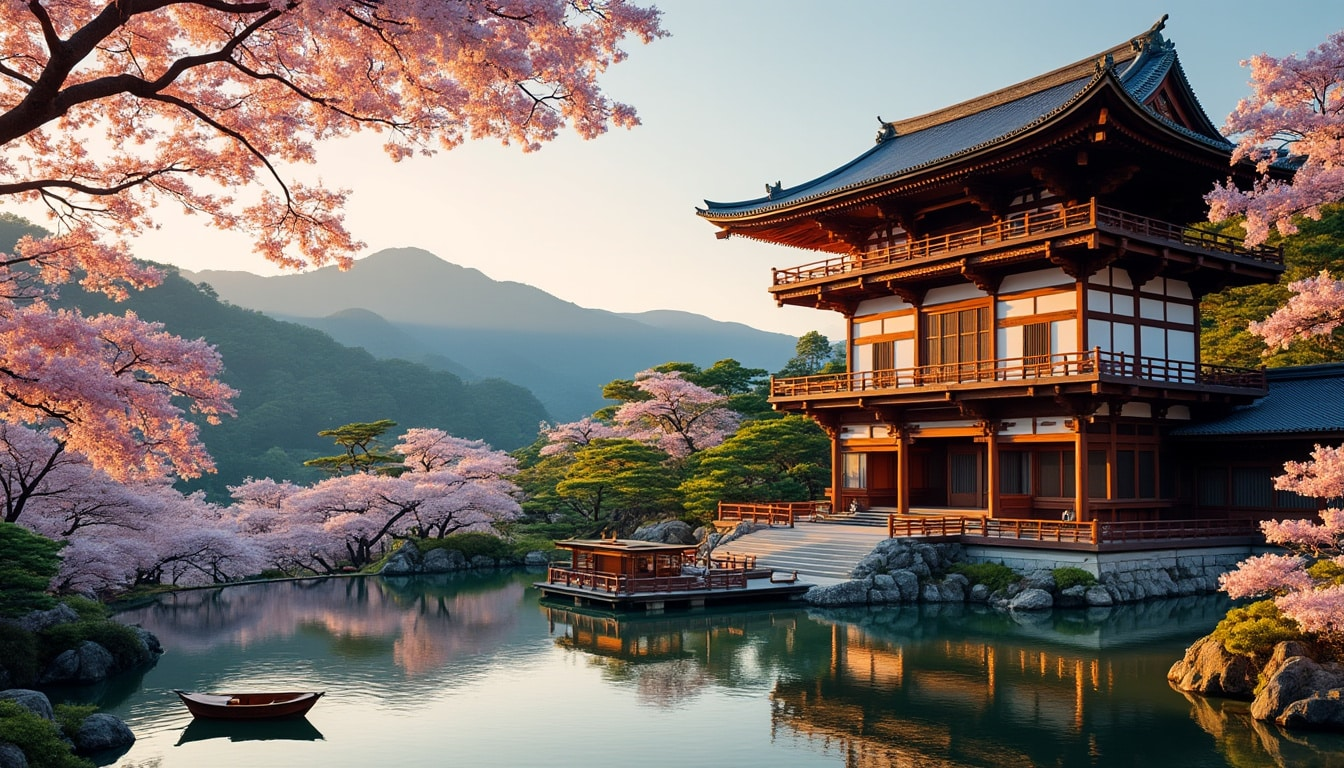novellainstitute.com – The Venetian Carnival, held annually in Venice, Italy, is one of the world’s most renowned festivals. Known for its opulence, historical significance, and theatrical flair, the event attracts thousands of visitors each year who come to immerse themselves in the splendor of the city and partake in its centuries-old traditions.
A Glimpse into History
The origins of the Venetian Carnival can be traced back to the 11th century, though it gained prominence in the 13th and 14th centuries. It was a time of excess and exuberance, when Venetians could shed their everyday identities and social hierarchies by donning elaborate costumes and masks. In medieval Venice, the wearing of masks allowed people to transcend the rigid class structure of the time. It was a momentary escape from social and political constraints, where even the most powerful aristocrats and the poorest workers could be equals.
The Carnival was officially recognized in 1296 by the Venetian Republic, which declared that the period of revelry would begin on St. Stephen’s Day (December 26) and end on Shrove Tuesday, the day before Lent. Over the centuries, the festivities grew more extravagant, attracting nobility and foreign dignitaries, but it also became a time for revelers to indulge in food, drink, dance, and merrymaking. However, in the late 18th century, the Carnival came to a halt under the rule of Napoleon Bonaparte, who abolished many of Venice’s traditions. It wasn’t until the 20th century that the event was revived in its modern form.
The Masks: A Symbol of Anonymity and Freedom
Arguably the most iconic feature of the Venetian Carnival is the mask. The tradition of wearing masks during the Carnival began as a way to disguise one’s identity and escape societal constraints. Masks allow individuals to express themselves freely, whether through revelry, performance, or simply anonymity. The masks vary in design, and each one carries its own significance and style.
Some of the most famous masks include:
- Bauta: A full-face mask with a prominent chin and no mouth, often paired with a tricorn hat and a black cape. The Bauta was historically worn by men and allowed the wearer to speak and eat without removing the mask.
- Colombina: A half-mask, usually decorated with intricate designs, jewels, and feathers. It is typically worn by women and covers only the eyes, allowing for more freedom of movement.
- Moretta: A small, oval-shaped black mask, traditionally worn by women. It’s distinguished by its complete coverage of the face and its distinctive lack of mouth hole.
- Volto: A white mask that covers the entire face, often seen in combination with elegant costumes. The Volto mask is a symbol of mystery, tradition, and aristocratic grandeur.
The Festivities: Parades, Balls, and Street Performances
The Venetian Carnival is an immersive cultural experience that spans nearly two weeks, with a wide range of events, each offering a unique way to experience the magic of the festival.
1. The Grand Opening – The Flight of the Angel
The Carnival officially begins on Fat Thursday (the first day of the festival) with a breathtaking event known as La Vogata del Leone (The Flight of the Angel). A chosen “Angel” (typically a young woman) dressed in a beautiful costume and a feathered mask descends from the top of the Campanile (bell tower) in Piazza San Marco. This daring aerial performance kicks off the Carnival with a symbolic gesture of renewal and excitement, drawing crowds from around the world.
2. Costume Balls and Gala Events
The highlight of the Venetian Carnival is undoubtedly the Masquerade Balls held in some of Venice’s most historic palaces and grandiose venues. These exclusive, opulent events allow attendees to mingle in costume, dance to classical music, and enjoy sumptuous feasts. The most famous of these events is the Ballo del Doge, which attracts the elite and is celebrated with extravagant costumes, performances, and entertainment. Tickets to these exclusive balls are expensive and often require careful planning and preparation.
3. The Parade of Costumes and Masks
On the streets of Venice, particularly in Piazza San Marco and along the Grand Canal, visitors can stroll among elaborate parades and street performances. The streets are filled with people wearing intricate costumes, some of them handcrafted by local artisans. These costumes draw inspiration from Venetian history, the Baroque period, and even the works of famous artists like Tiepolo or Canaletto.
4. The Mask Contest
One of the most entertaining and visually stunning events of the Carnival is the Mask Contest held in Piazza San Marco. The contest awards prizes for the best masks, with categories ranging from traditional to contemporary, and participants often spend months designing their masks to make them as elaborate and unique as possible. It’s a celebration of creativity and craftsmanship that continues a centuries-old tradition.
5. Street Performances and Theatrical Acts
Throughout the Carnival, the streets of Venice become a stage for numerous performances, including commedia dell’arte plays, music, dance, and theatrical performances. Local actors and street performers bring to life the history and culture of Venice, inviting revelers to experience the city’s unique atmosphere in a playful, interactive way.
The End of the Carnival: A Somber Farewell
The final day of the Carnival is marked by a more reflective and symbolic event — Martedì Grasso (Fat Tuesday). The closing of the Carnival often involves a large parade or procession, and many people gather for one last indulgence before the start of Lent. At sunset, as the city begins to quiet down, the festivities come to an end with the symbolic “Burning of the Carnival”, in which an effigy of the Vecia (the old woman) is set alight, symbolizing the end of the revelry and the return to everyday life.
Modern-Day Carnival: A Global Celebration
Today, the Venetian Carnival has expanded beyond its historical roots, attracting visitors from around the globe. The celebration continues to evolve, blending traditional Venetian elements with modern-day performances and art exhibitions. The event is a unique fusion of history, art, fashion, and performance, drawing a diverse crowd eager to experience Venice’s distinctive atmosphere.
While the Venetian Carnival is undeniably a time of revelry and escape, it also reflects the enduring allure of Venice itself: a city of mystery, beauty, and artistic excellence. Whether you’re attending a grand masquerade ball, watching a performance in Piazza San Marco, or simply strolling through the narrow streets in a dazzling mask, the Carnival offers a chance to step into another world — one that invites you to embrace creativity, indulgence, and the timeless allure of Venice.
Conclusion
The Venetian Carnival is more than just a festival; it’s an immersion in a centuries-old tradition that blends history, artistry, and imagination. As visitors don their masks and costumes, they become part of a living tradition that celebrates the joys of Venice and the mystery of anonymity. Whether you’re drawn by the allure of historical grandeur, the beauty of Venetian masks, or the excitement of the parades, the Carnival remains one of the world’s most enchanting celebrations — a reminder that sometimes, in the right mask, we can all be someone else, even if just for a day.





